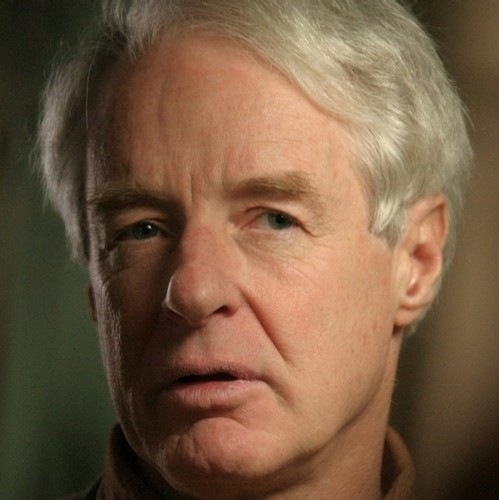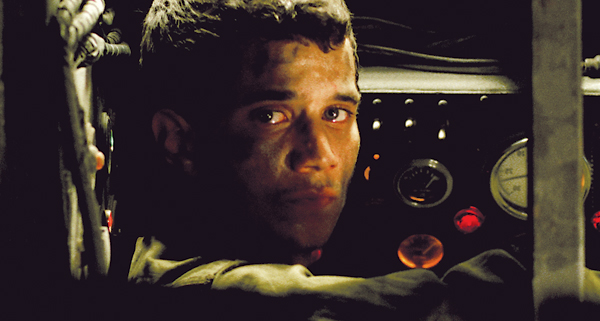(This is the twentieth entry in The Modern Library Nonfiction Challenge, an ambitious project to read and write about the Modern Library Nonfiction books from #100 to #1. There is also The Modern Library Reading Challenge, a fiction-based counterpart to this list. Previous entry: The Strange Death of Liberal England.)
Thy fanes, thy temples to the surface bow,
Commingling slowly with heroic earth,
Broke by the share of every rustic plough:
So perish monuments of mortal birth,
So perish all in turn, save well-recorded worth;— Lord Byron, Child Harolde’s Pilgrimage
 I must confess from the outset that the study of armed human conflict, with its near Spartan fixation on tactics and statistics, has long filled me with malaise. It is among the least sexiest subjects that a polymath of any type can devote her attentions to, akin to cracking open a thick, limb-crushing tax code volume written in a way that obliterates all joy and finding a deranged pleasure within this mind-numbingly dull amalgam of numbers and turgid prose. As Margaret Atwood once quipped in a poem, the military historian says, “I don’t ask why, because it is mostly the same.” And when the song remains the same, why would anyone other than a ketamine fiend dance to it?
I must confess from the outset that the study of armed human conflict, with its near Spartan fixation on tactics and statistics, has long filled me with malaise. It is among the least sexiest subjects that a polymath of any type can devote her attentions to, akin to cracking open a thick, limb-crushing tax code volume written in a way that obliterates all joy and finding a deranged pleasure within this mind-numbingly dull amalgam of numbers and turgid prose. As Margaret Atwood once quipped in a poem, the military historian says, “I don’t ask why, because it is mostly the same.” And when the song remains the same, why would anyone other than a ketamine fiend dance to it?
I’ve long pictured the military historian as some aging jingoistic white male whose idea of a good time involves blasting John Philip Sousa from a set of speakers that should be devoted to happening hip-hop: a lonely and humorless parasite who moves cast-iron figures across a threadbare map in some dusty basement, possibly talking to himself in a gruff tone that uncannily mimics Rod Steiger’s inebriated cadences. He seems overly enamored of the dry details of ordnance, mirthless arrows, and terrain circles. Perhaps he fritters away his time in some homebuilt shack far off the main artery of Interstate 76, ready to reproduce well-studied holes with his Smith & Wesson should any nagging progressive come to take away his tattered Confederate flag or any other paleolithic memorabilia that rattles his martial disposition. But let’s say that such a man is committed to peace. Then you’re left with his soporific drone as he dodders on about some long dead general’s left flank attack in the most unpalatable ramble imaginable. He prioritizes a detached tabulative breakdown over the more palpable and poignant truths that motivates men. He doesn’t seem to care about how a soldier experiences trauma or summons bravery in impossible conditions, or how these battles permanently alter nations and lives. The military historian is, in Napoleonic short, a buzz killer despite his buzz cut. Indeed, military history is so embarrassing to read and advocate that, only a few weeks ago, I was forced to hide what I was reading when a woman started flirting with me at a bar. (I sheepishly avoided revealing the title to her for fifteen minutes. Nevertheless, she persisted. And upon seeing The Face of Battle, the woman in question rightfully headed for the hills, even after I offered to buy her a drink.)
There are quite a few military history books on the Modern Library list. So I’m more or less fucked. It is not that war itself does not interest me. Human beings have been fighting each other since the beginning of time and only a soulless anti-intellectual fool resolutely committed to the vulgar act of amusing himself to death would fail to feel anything pertaining to this flaw in the human makeup. The podcaster Dan Carlin, who specializes in military history, is one of the few people who I can listen to in this medium for many hours and remain completely enthralled. But that is only because Carlin is incredibly skilled at showing how the paradigm shifts of war influence our everyday lives. Christopher Nolan’s Dunkirk was a remarkable film that hurled its audience into the dizzying depths of war, but this is merely a vicarious sensory experience. I can get behind Paul Fussell’s The Great War and Modern Memory (ML NF #75) because of that book’s cogent observations on how war influenced literary culture. Neil Sheehan’s A Bright Shining Lie (ML NF #84) remains a journalistic masterpiece that I very much admire — in large part because of its razor-sharp commitment to human psychology, which in turn allows us to understand the miasmic madness of making tactical decisions (see that book’s incredible “Battle of Ap Bac” chapter). But I’d hesitate to categorize either of these two brilliant volumes within the exacting genre of unadulterated military history. I’ve always had the sense that there’s an underlying bellicosity, if not an outright advocacy of warfare, with books that are exclusively dolled up in camo.
So upon reading The Face of Battle, it was something of a relief to see that John Keegan was up front from the get-go about what military history fails to do, and why accounts of battles are so problematic. He begins the book saying that he has never seen or been in a battle. And this is a hell of a way to open up a book that professes to give us the lowdown on what war is all about. It is a genuinely humble statement from someone who has made a career out of being an expert. He openly points to military history’s major weakness: “the failure to demonstrate connection between thought and action.” “What of feeling?” I thought as I read this sentence. According to Keegan, historians need to keep their emotions on a leash. And the technical example he cites — the British Official History of the First World War — is an uninspiring passage indeed. So what is the historian to do? Quote from the letters of soldiers. But then Keegan writes, “The almost universal illiteracy, however, of the common soldier of any country before the nineteenth makes it a technique difficult to employ.” Ugh. Keegan!
From Ilya Berkovich’s Motivation in War: The Experience of Common Soldiers in Old-Regime Europe:
Considering the social origins of most eighteenth-century soldiers, one might think that literate soldiers were uncommon. However, literacy among the lower classes in old-regime Europe was becoming less exceptional. It is estimated that up to 40 per cent of the labouring poor in Britain were literate. Between 1600 and 1790, the portion of French bridegrooms singing their parish records doubled to about half of the total male population. Interestingly, the corresponding figures in northern and eastern frontier regions, which provided most French recruits, were much higher, with some areas coming close to universal literacy. Literacy rates in the Holy Roman Empire fluctuated widely, yet it is telling that over 40 per cent of the day labourers in mid-century Coblenz were able to sign their names. In rural East Prussia, one of the poorest regions in Germany, comparable figures were reached in 1800, although this was still a fourfold increase compared to only half-a-century before….
And so on. Fascinating possibilities for scholarship! It seems to me that someone here did not want to roll up his sleeves and get his hands dirty.
You see the problems I was having with this book. On one hand, Keegan wants to rail against the limitations of military history (and he should! you go, girl!). On the other hand, he upholds the very rigid ideas that stand against the execution of military history in a satisfying, fact-based, and reasonably emotional way that allows voluble chowderheads like me an entry point.
But that’s not the main focus of this book. Keegan settles upon three separate events — the Battle of Agincourt on October 25, 1415, the Battle of Waterloo on June 18, 1815, and the first day of battle on the Somme (July 1, 1916) — to seek comparisons, commonalities, and various parallels that we might use to understand military mechanics. He is duly reportorial in each instance, but overly fond of taxonomy rather than tangibility. Still, there are moments when Keegan’s bureaucratic obsessiveness are actually interesting — such as his examination of British archers and infantry running up against French cavalry during Agincourt. After all, if a horse is charging its way into a man, either the horse is going to run away, men are going to be knocked down, or there’s going to be a “ripple effect” causing open pockets on each side of the horse. So it’s actually quite extraordinary to consider how the French got their asses kicked with such a clear advantage. Well, the British did this with stakes, which impaled the horses. And the threat of this obstacle caused the French to retreat with their backs to the British, resulting in archers lobbing arrows into their vertebrae.
Keegan informs us that “the force of unavoidable circumstances” sealed the fate of the French and allowed Henry V to win at Agincourt. When Keegan gets to Waterloo, we see a similar approach adopted by Napoleon near the end. Large crowds of French infantry rushed towards the British line, landing within mere yards. The two armies exchanged fire and the French, at a loss of what to do, turned around and fled. This was not an altogether smart strategy, given the depleting reserves that Napoleon had at his disposal. But it does eloquently demonstrate that battles tend to crumble once one side has entered an unavoidable choice. The rush of men on both sides at the Somme in 1916, of course, in the trenches not only escalated this to an unprecedented scale of atrocity, but essentially laid down the flagstones for the 20th century’s practice of mutually assured destruction.
These are vital ideas to understand. Still, I’m not going to lie. Keegan was, in many ways, dull and soporific — even for a patient reader like me. I learned more about Henry V’s campaign by reading Juliet Barker’s excellent volume Agincourt, which not only unpacked the incredible logistics of invading northwestern France with engrossing aplomb but also juxtaposed this campaign against history and many vital realities about 15th century life. And a deep dive into various World War I volumes (I especially recommend Richard Aldington’s surprisingly ribald novel, Death of a Hero) unveiled a lot of unanticipated sonic transcriptions that inspired me to draft an audio drama script that I hope to produce in a few years. Keegan is certainly helpful in a dry intellectual manner — the equivalent of being served a dull dish of desiccated biscuits when you haven’t eaten anything for days; I mean, there’s a certain point in which you’ll gorge on anything — but he’s not the man who inspired me about battle. Hell, when one of the most boring and pretentious New Yorker contributors of all time espouses Keegan’s “matchlessly vivid pen,” you know there’s a reason to hide beneath your blanket. Keegan is undoubtedly on this list because nobody before him had quite unpacked war from the bottom-up approach rather than the general’s top-down viewpoint. But like most military historians, he didn’t have enough of a heart for my tastes. There’s a way to present a detailed fact-driven truth without being such a detached fussbucket about it. And we shall explore and exuberantly praise such virtuosic historians in future Modern Library installments!
Next Up: Erwin Panofsky’s Studies in Iconology!







